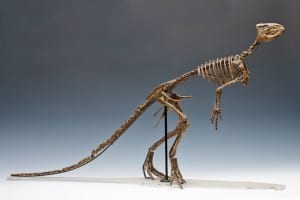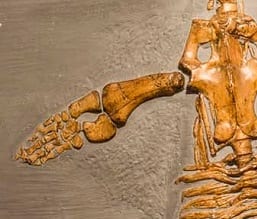Hypsilophodon foxii cast part 3
By ucwehlc, on 3 November 2023
Previously on the Grant Museum blog we introduced our biggest dinosaur, along with several mysteries. How did we get it? Who made it? Why does its head look so strange? Then in an exciting turn of events 4 years later we discovered a picture of our cast being made at the Natural History Museum. Now another 4 years on the story continues with Museum Studies students Imogen Geoghegan, Nadia Adal, Lauren Brown Phelan and Yanning Huang who have written this blog about their dinosaur research project.
**The Hypsilophodon foxii cast (Part 3)**
We took part in a research project with the Grant Museum of Zoology (GMZ) to uncover the truth behind this mystery object in the GMZ’s collection. It started with a few photographs and texts from the GMZ which led us to discover the cast’s background and even the species of the dinosaur (Hypsilophodon foxii), both of which were in doubt and unconfirmed before our project began.
 Close
Close









